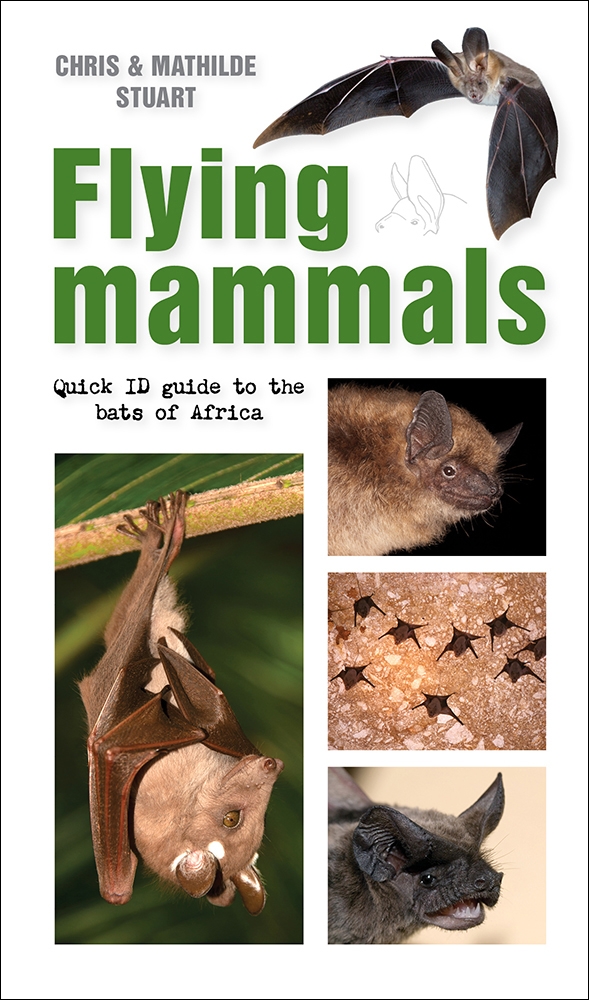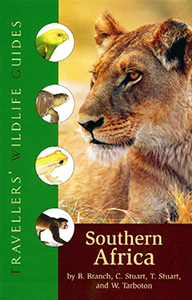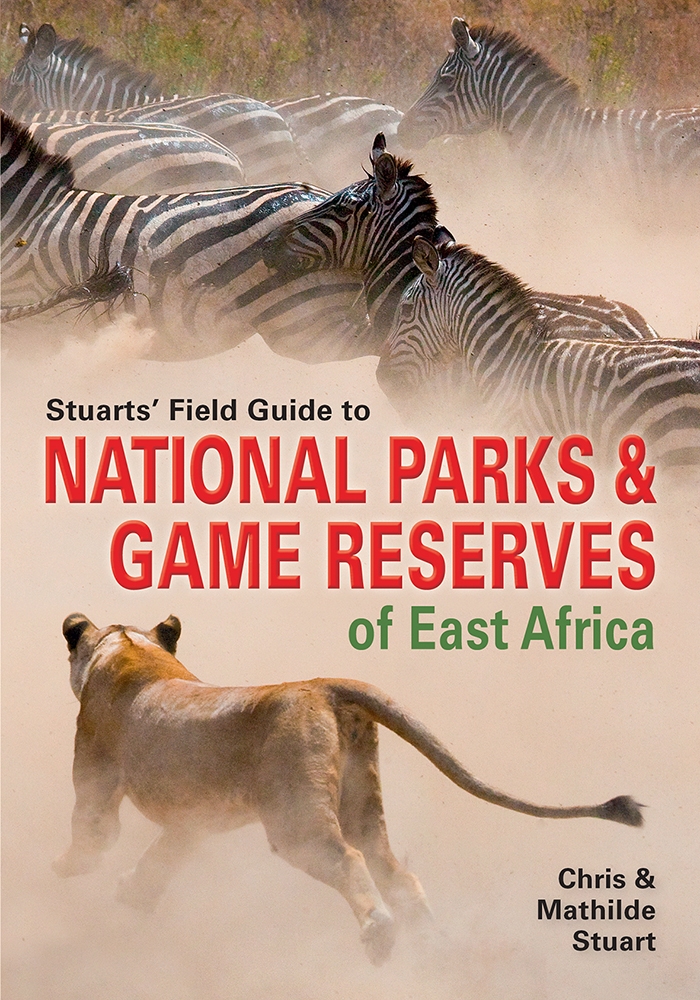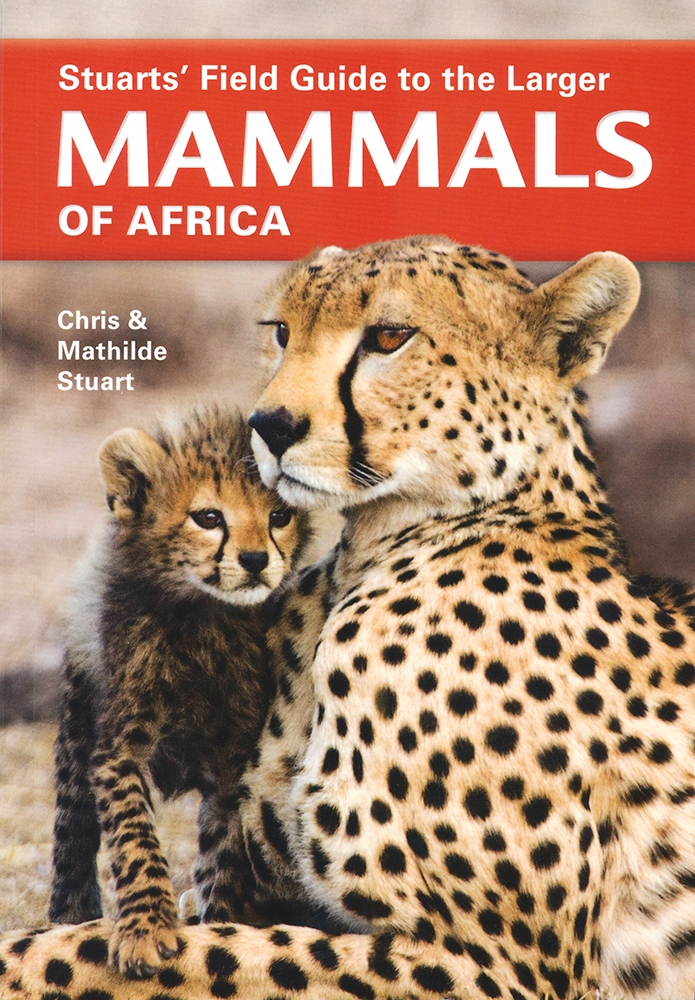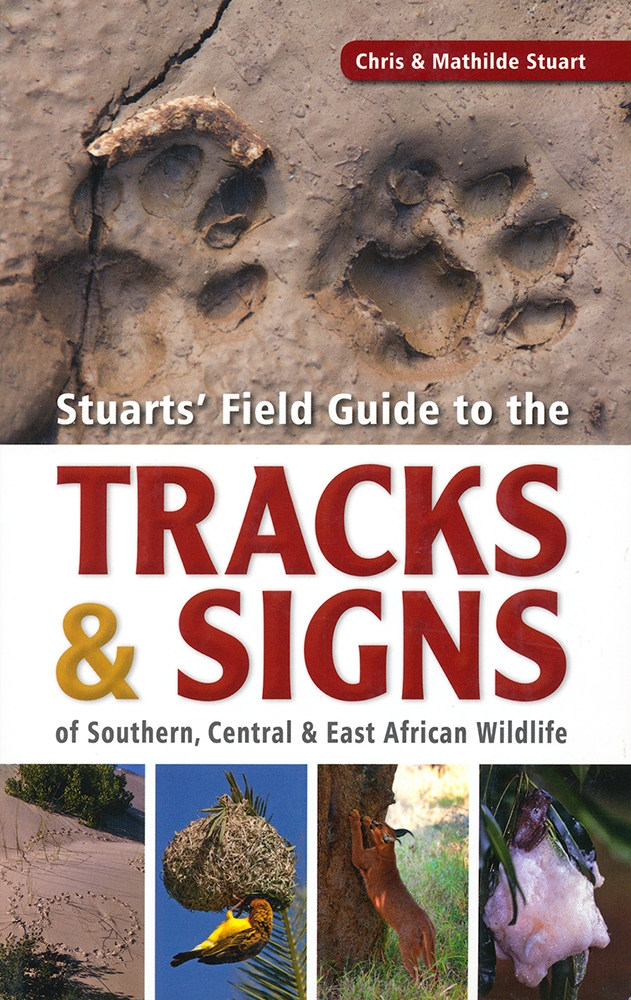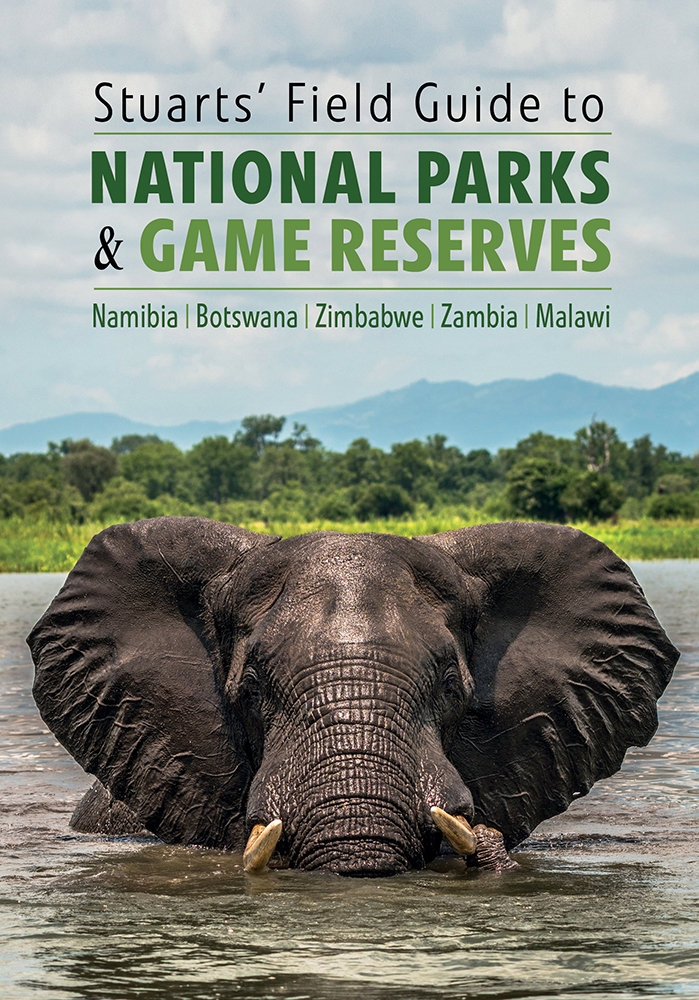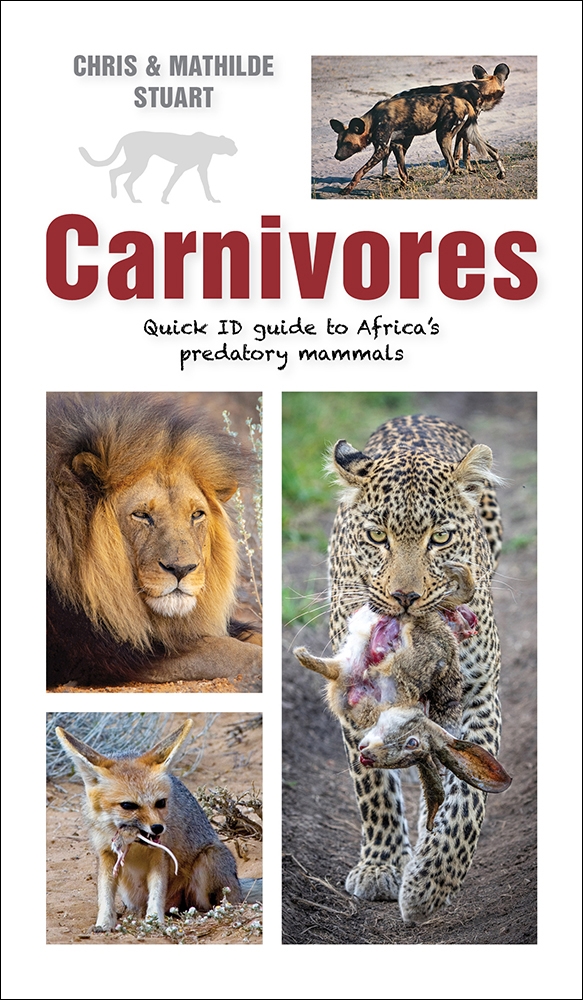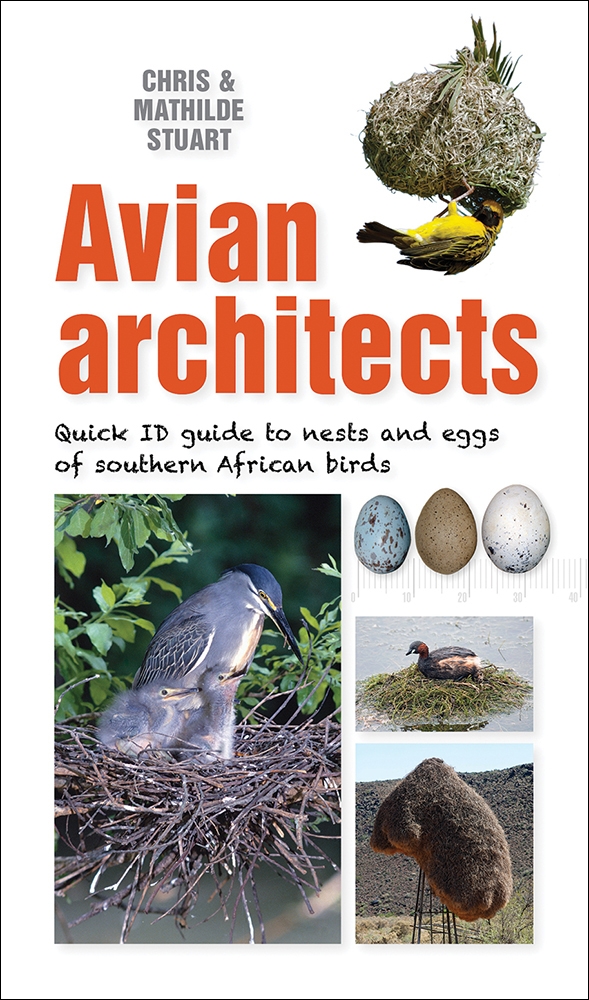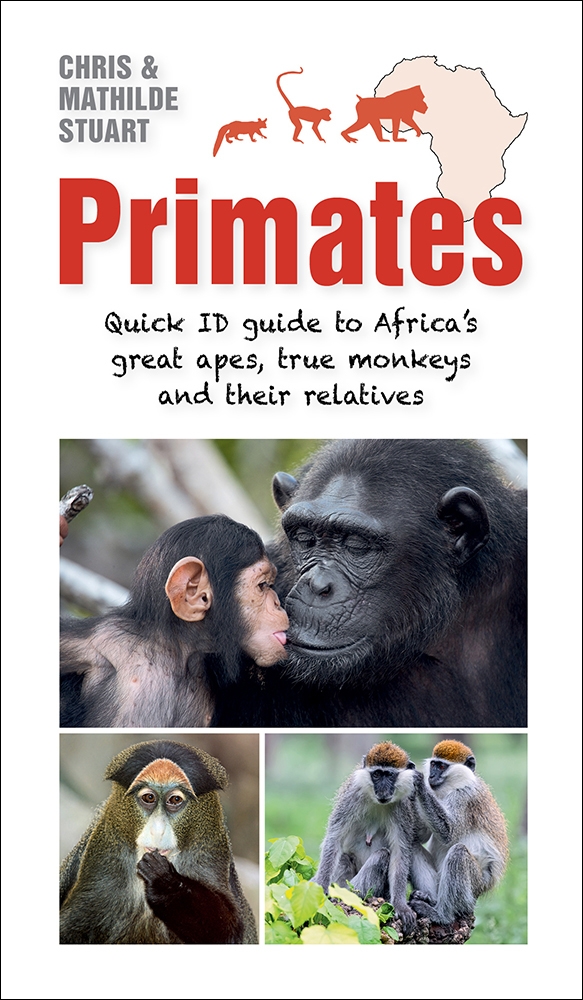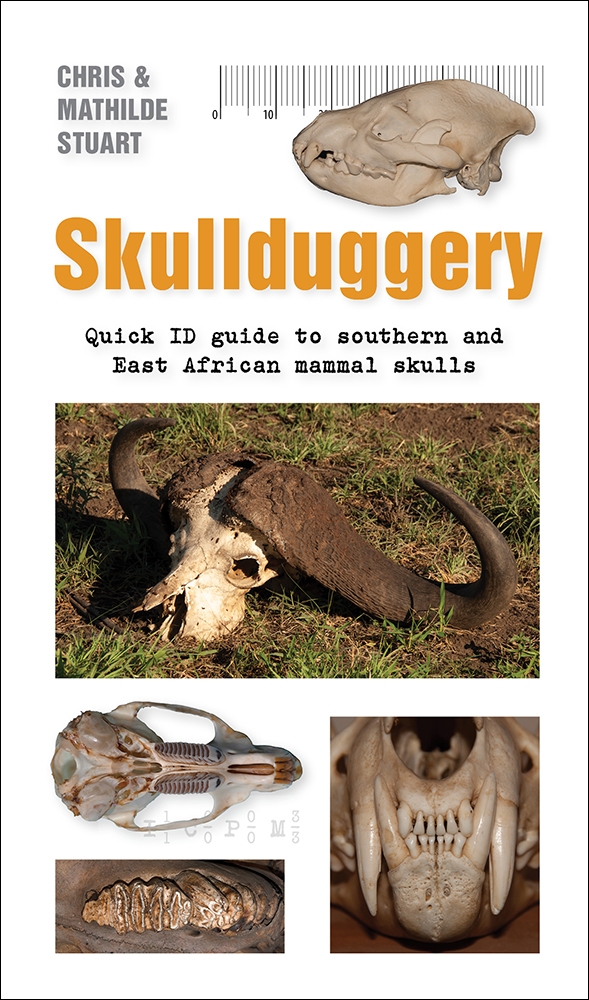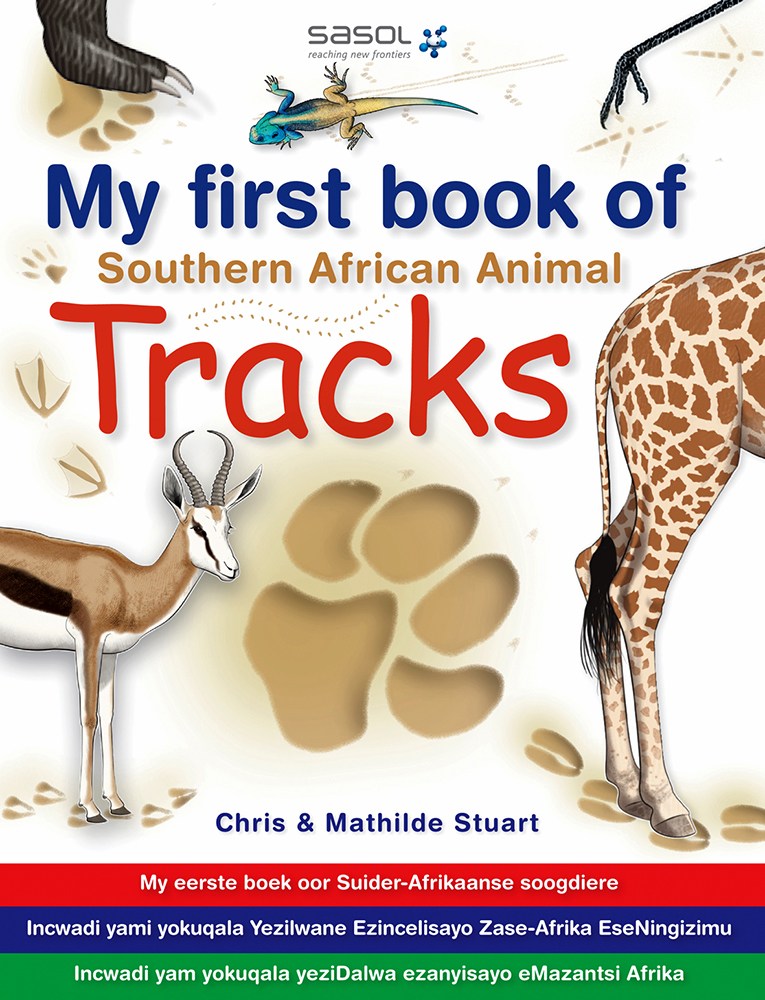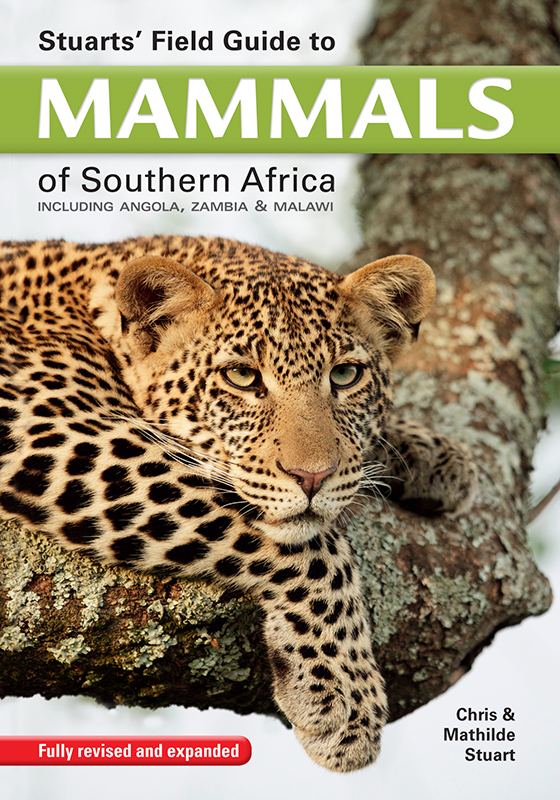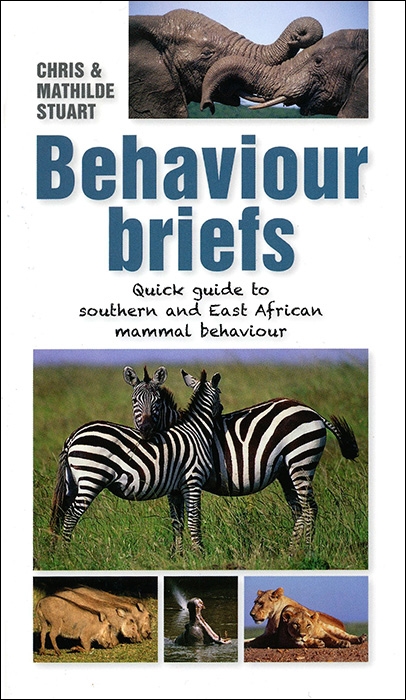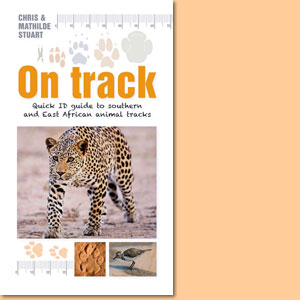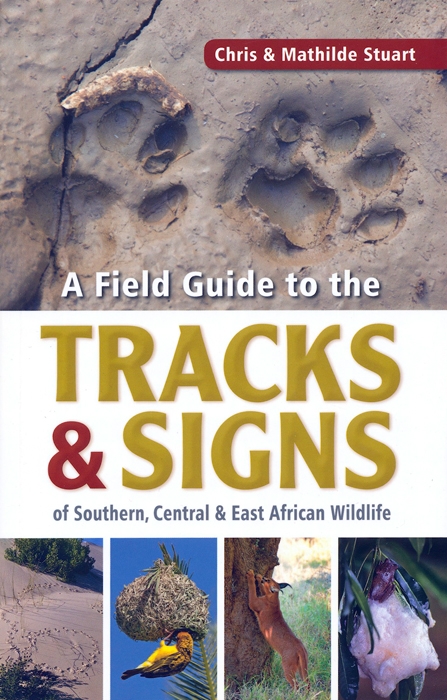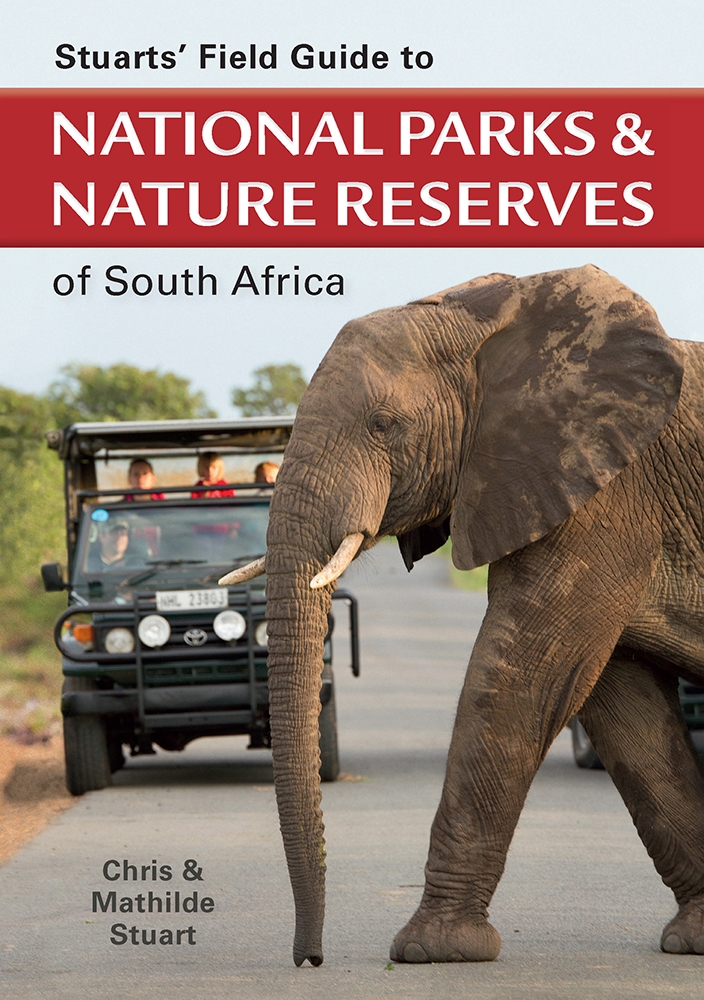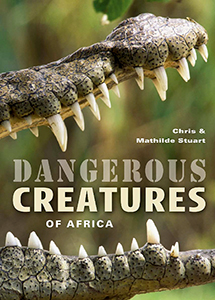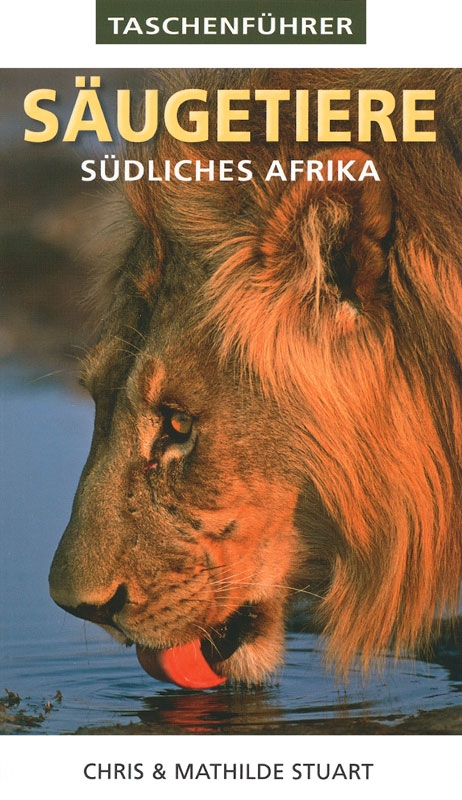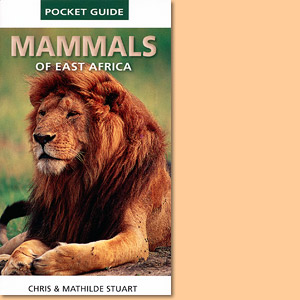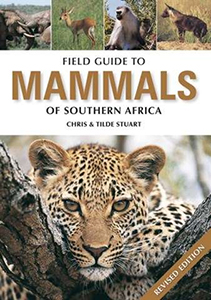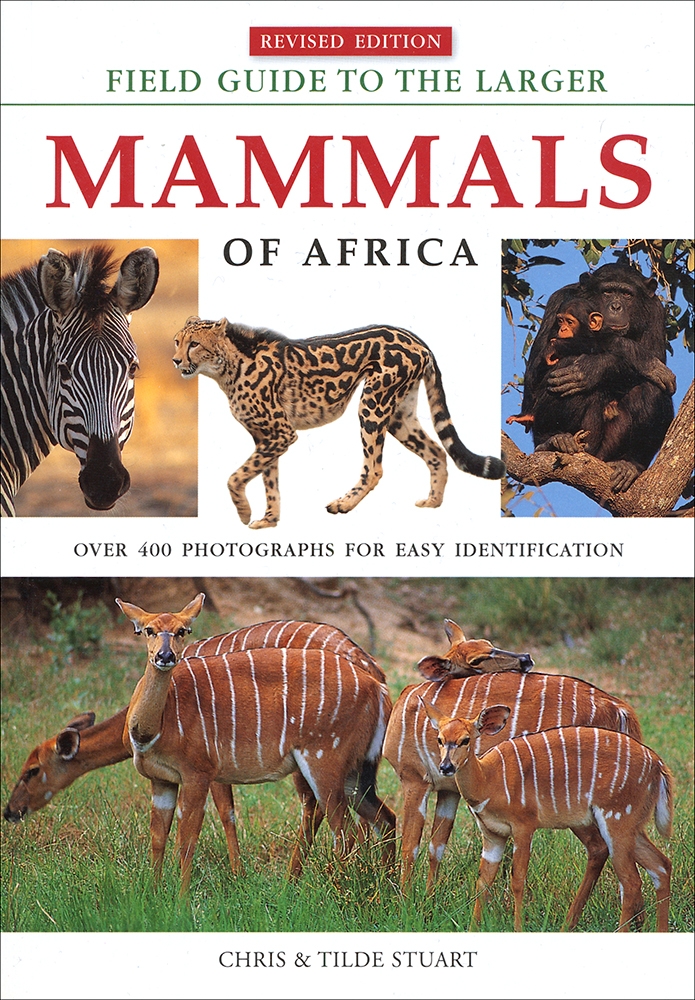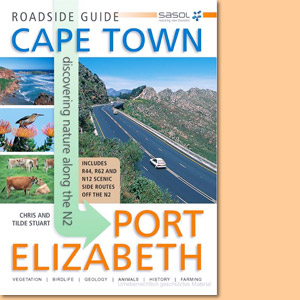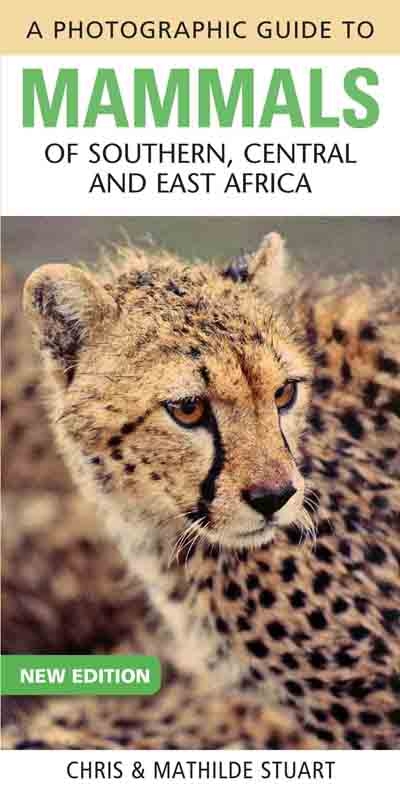Flying Mammals Quick ID guide to the bats of Africa, by Chris and Mathilde Stuart
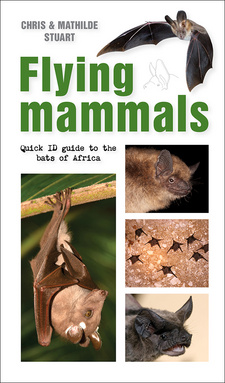
Flying Mammals Quick ID guide to the bats of Africa, by Chris and Mathilde Stuart. Penguin Random House South Africa. Imprint: Struik Nature. Cape Town, South Africa 2021. ISBN 9781775847281 / ISBN 978-1-77-584728-1
Flying Mammals Quick ID guide to the bats of Africa, by Chris and Mathilde Stuart, introduces you to the known bat families in Africa and points out typical characteristics that will help you identify the family to which the creature you have observed belongs.
When observing bats, take care not to handle them or their droppings; harmful viruses and diseases can be transmitted from bats to humans and, conversely, from humans to bats. Twenty percent of all mammal species are bats. At least 259 bats occur in Africa: 230 insect-eating bats and 29 fruit-eating bats, two of which are restricted to Indian Ocean offshore islands. This concise guide introduces you to the known bat families in Africa and points out typical characteristics that will help you identify the family to which the creature you have observed belongs. Although this guide is by no means comprehensive, we hope it stimulates an interest in one of nature's most fascinating animal groups.
EVOLUTION OF BATS
Because of the delicate nature of bat bones, very few bat fossils have survived. The oldest known bat fossil, Icaronycteris index, has been dated to about 52.2 million years bp. Where bats fit in the evolutionary tree is still not fully understood and each new generation of taxonomists turns earlier theories on their heads. It is likely that all modern bats evolved from a common ancestor. Bats first split off from other mammal groups during the Late Cretaceous (100-65 mya) before dividing into two major divisions (fruit-eating and insect-eating bats), with 21 distinct families evolving during the Eocene (55-35 mya). At the time of writing, more than 1,400 distinct species were recognised globally. Ancestral bats probably first developed as arboreal gliders - in much the same way as the flying squirrels of today. Over time, bats evolved a flight stroke to become the only true flying mammals, a capacity shared only with birds and a host of insect species. From the fossil record it appears that flight evolved before echolocation. This suggests that the first bats might have been diurnal, with sight having been the key to their success. The advent of feathered predators probably forced them into a nocturnal lifestyle - for which echolocation has distinct advantages. A special word of thanks to Ernest Seamark of African Bats NPC (see page 40) for letting us use many of his excellent photographs and for checking this work, and to Ara Monadjem for the use of some of his images. Other photographers are credited alongside their images. [...]
This is an excerpt from Flying Mammals Quick ID guide to the bats of Africa, by Chris and Mathilde Stuart.
Title: Flying Mammals
Subtitle: Quick ID guide to nests and eggs of southern African birds
Author: Chris Stuart; Mathilde Stuart
Publisher: Penguin Random House South Africa
Imprint: Struik Nature
Cape Town, South Africa 2021
ISBN 9781775847281 / ISBN 978-1-77-584728-1
Softcover, 10 x 18 cm, 40 pages, throughout colour photographs
Stuart, Chris und Stuart, Tilde im Namibiana-Buchangebot
Flying Mammals Quick ID guide to the bats of Africa
Flying Mammals Quick ID is a compact and quick ID identification guide to the bats of Africa.
Traveller's Wildlife Guide Southern Africa
Traveller's Wildlife Guide Southern Africa introduces 500 of Southern Africa’s most common amphibians, reptiles, birds, and mammals.
Stuart's Field Guide to National Parks and Game Reserves of East Africa
Stuart's Field Guide to National Parks and Game Reserves of East Africa provides an overview of some 58 protected areas across East Africa.
Stuarts’ Field Guide to the Larger Mammals of Africa
Stuarts’ Field Guide to the Larger Mammals of Africa concentrates on the more visible and easily distinguished larger species.
Stuarts' Field Guide to the Tracks & Signs of Southern, Central and East African Wildlife
Stuarts' Field Guide to the Tracks & Signs of Southern, Central and East African Wildlife, this is the 5th revised edition.
Stuarts' Field Guide to National Parks and Nature Reserves of Namibia, Botswana, Zimbabwe and Zambia
Stuarts' Field Guide to National Parks and Nature Reserves of Namibia, Botswana, Zimbabwe and Zambia.
Carnivores: Quick ID guide to Africa's predatory mammals
Carnivores: Quick ID guide is a compact and quick ID identification guide to Africa's predatory mammals.
Avian Architects: Quick ID guide to nests and eggs of southern African birds
Avian Architects: Quick ID is a compact and quick ID identification guide to nests and eggs of southern African birds.
Primates: Quick ID guide to Africa's great apes, true monkeys and their relatives
Primates Quick ID is a compact and quick ID identification guide to Africa's great apes, true monkeys and their relatives.
Skullduggery: Quick ID guide to southern and East African mammal skulls
Skullduggery is a compact and quick ID identification guide to skulls of southern and East African mammals.
My first book of Southern African animal tracks
My first book of Southern African Animal Tracks introduces 55 different types of animals and their footprints.
Stuarts' Field Guide to Mammals of Southern Africa
Stuart's Field Guide to Mammals of Southern Africa covers near to 400 mammal species including Angola, Zambia and Malawi since the 5th edition of 2015.
Behaviour briefs: Quick guide to southern and East African animal behaviour
Why do they do that and what next? Behaviour briefs is a quick guide to southern and East African animal behaviour.
On Track: Quick ID Guide to Southern and East African Animal Tracks
On Track is a quick identification guide to tracks of Southern and East African most commonly found mammals, reptiles, rodents, birds and insects.
A Field Guide to the Tracks & Signs of Southern, Central and East African Wildlife
Latest edition of A Field Guide to the Tracks & Signs of Southern, Central and East African Wildlife.
Stuarts' Field Guide to National Parks and Nature Reserves of South Africa
Stuarts' Field Guide to National Parks and Nature Reserves of South Africa offers a comprehensive overview of 43 parks, reserves and wilderness areas.
Dangerous creatures of Africa
The focus of Dangerous creatures of Africa is on understanding, identifying, avoiding and surviving these potential hazards of the African wilds.
Taschenführer: Säugetiere, Südliches Afrika
Der Taschenführer Säugetiere: Südliches Afrika, legt seinen Schwerpunkt auf die größeren, öfter gesehenen Tierarten, schließt allerdings auch einige ungewöhnliche Arten ein.
Mammals Of East Africa Pocket Guide
Mammals Of East Africa Pocket Guide covers all of the common and some of the less common mammal species.
Mammals of Southern Africa Pocket Guide
Authoritative and colourfully illustrated, Mammals of Southern Africa Pocket Guide offers concise information.
Field Guide to Mammals of Southern Africa
A total of 337 species are covered in this fully revised comprehensive field guide to mammals of Southern Africa.
Field Guide to the Larger Mammals of Africa
Field Guide to the Larger Mammals of Africa provides over 400 colour photos, with concise, pertinent information highlighting the diagnostic features of each species.
Ngorongoro Conservation Area
From the series 'Great Game Parks of Africa' this is a portrait of the Ngorongoro Conservation Area.
Sasol Roadside Guide. Cape Town-Port Elizabeth: Discovering Nature Along the N2
The Sasol Roadside Guide Cape Town-Port Elizabeth: Discovering Nature Along the N2 interprets the surrounding countryside - plants, birds, mammals, reptiles, agriculture, geology.
A Photographic Guide to Mammals of Southern, Central and East Africa
A Photographic Guide to Mammals of Southern, Central and East Africa introduces 152 mammal species of each family group.
Field Guide to Tracks and Signs of Southern and East African Wildlife
Related to Southern African and East African Wildlife, this great field guide is about their tracks and signs, like droppings, feeding signs, scent marks and others.

